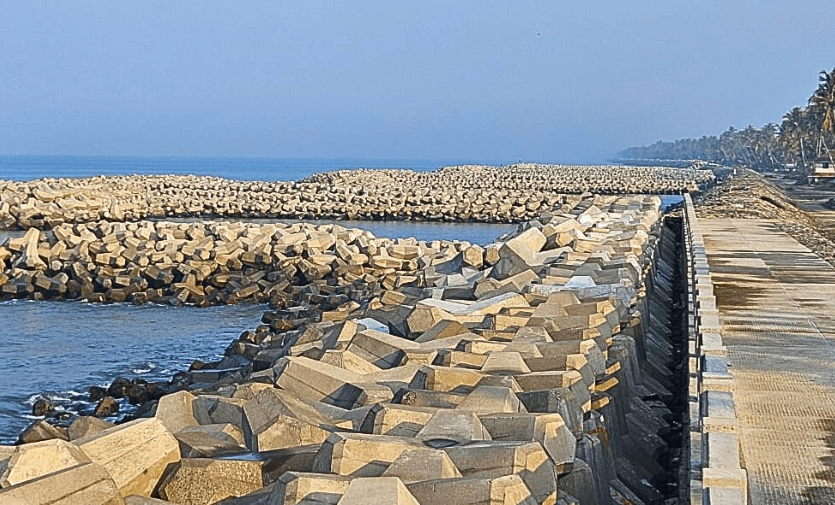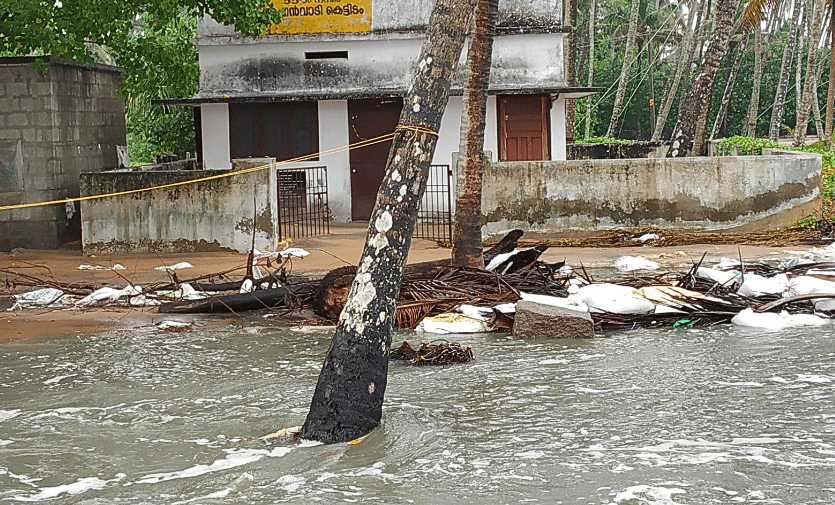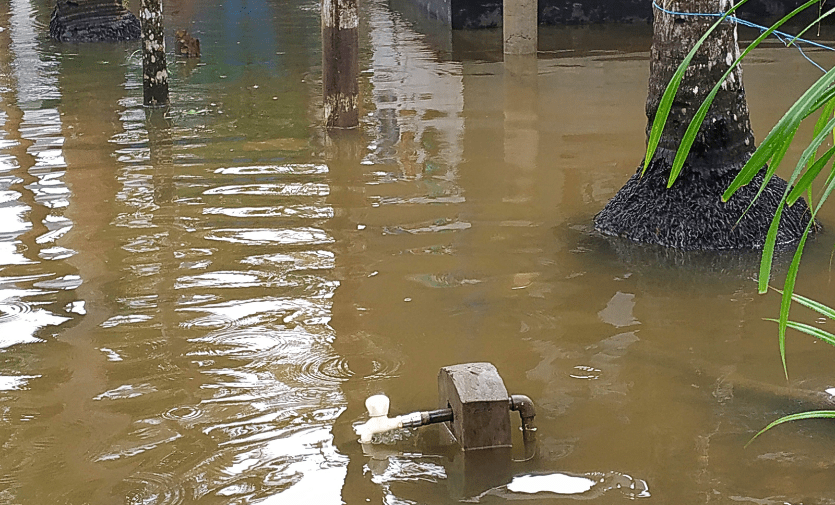[NEW DELHI] Since December, Raphel Abraham has been struggling to cope with life in his flooded home on the banks of Vembanad Lake, in Edakochi, southern India.
He is one of thousands of people faced with severe waterlogging around India’s longest lake because of seawater intrusion caused by a phenomenon locally called ‘kallakkadal’, meaning “sea that arrives like a thief”.
“The past four months have been … a hell-like situation for us,” Abraham told SciDev.Net.
After the formal approval by UNESCO in 2012, kallakkadal, a term used by fisherfolk in Kerala, has now been adopted for scientific use.
Researchers define kallakkadal as flooding during the pre-monsoon (April-May) season caused by swelling waves originating thousands of kilometres away in the Indian Ocean. They say the swell waves can reach two to six metres in height.
However, the current water level in Vembanad Lake has remained high since last December, long before the supposed kallakkadal season.
Another local resident, Rajendran Thavanakkadavu, says that people living in hamlets on the banks of the lake were forced to abandon their homes and shift to rented accommodation elsewhere due to the flooding.

A tetrapod built at Chellanam in Kochi to prevent sea surge and coastal flooding. Photo credit: Sanjay Balachandran.
Abraham believes the government’s offer of temporary shelter for affected communities will only worsen their situation, due to a lack of adequate facilities.
“We want a permanent solution,” he says.
In response to local protests, state government officials held a meeting to discuss the implementation of short-term and long-term projects to avoid waterlogging. During the meeting local officials and experts agreed to highlight waterlogging as a fallout of climate change.
However, according to experts, it is hard to predict the arrival of swell waves.
M. Balakrishnan Nair, director of the Indian National Centre for Ocean Information Services, at the Ministry of Earth Sciences, says researchers only recently found that swells are reaching Indian coasts from distant points as far away as the Atlantic.
“Ocean swells are not caused by local winds, but by distant weather systems such as storms, hurricanes, or prolonged periods of strong gale-force winds,” explained Sanjay Balachandran, a researcher at Kerala University of Fisheries and Ocean Studies.
“During these storms, there is a significant transfer of energy from the atmosphere to the ocean, which generates large waves.”
The waves can travel thousands of kilometres before reaching the Kerala coast, impacting its shorelines long after the storm has passed, added Balachandran.
Waters rising

More flooding caused by kallakkadal events. Photo credit: Sanjay Balachandran
Previously, scientists believed that kallakkadal was confined to the Kerala–Tamilnadu coast. But now they find that it is happening in different places on the eastern and western coasts. It also being reported in Bangladesh.
N. Sanjeevan, former director of the Centre for Marine Living Resources and Ecology at India’s Ministry of Earth Sciences, says swell waves caused by ocean currents, rising sea temperature and thermal expansion of water in the Arabian sea due to rising temperatures are contributing to the rise in sea water levels in Vembanad Lake.
“[The] water level in Vembanad Lake remains high as it is not draining into the sea,” he explained.
“The tidal amplitude, or difference in high tide and low tide levels, which stood at one metre in coastal areas, has risen to 1.6 metres, resulting in waterlogging around the lake,” Sanjeevan added.

Access to basic amenities cut off during flooding caused by kallakkadal events. Photo credit: Sanjay Balachandran.
According to the Kerala University of Fisheries and Ocean Studies, around 400 million cubic metres of silt had accumulated in Vembanad Lake, significantly reducing its water storage capacity from 2,678 cubic metres in 1930 to 385 cubic metres in 2020.
The lake, which covered an area of 365 square kilometres in 1900 has shrunk to 206.4 square kilometres. Its average depth also dropped from eight metres to less than three metres.
Disappearing beaches
Forecasting the coming of swell surge in the Indian Ocean is “laborious work”, researchers said in a study published in 2021. They found that implementing altimeter data assimilation on a regional wave forecasting system significantly improved the swell forecast.
However, measures to mitigate the damage are urgently needed.
Sanjeevan says he doesn’t think removing silt from the lake is a solution as it would lead to higher intrusion of sea water.
K.V. Thomas, former head of the marine sciences division at the National Centre for Earth Science Studies, was the first to report the phenomenon of kallakkadal, in 1984.
“The disappearance of beaches has played havoc on the coasts resulting in kallakkadal, flash floods and intrusion of sea water into the lake,” Thomas told SciDev.Net.
“Recreating natural beaches and constructing sand dunes are among [the] solutions to be considered.”
This piece was produced by SciDev.Net’s Asia & Pacific desk.





